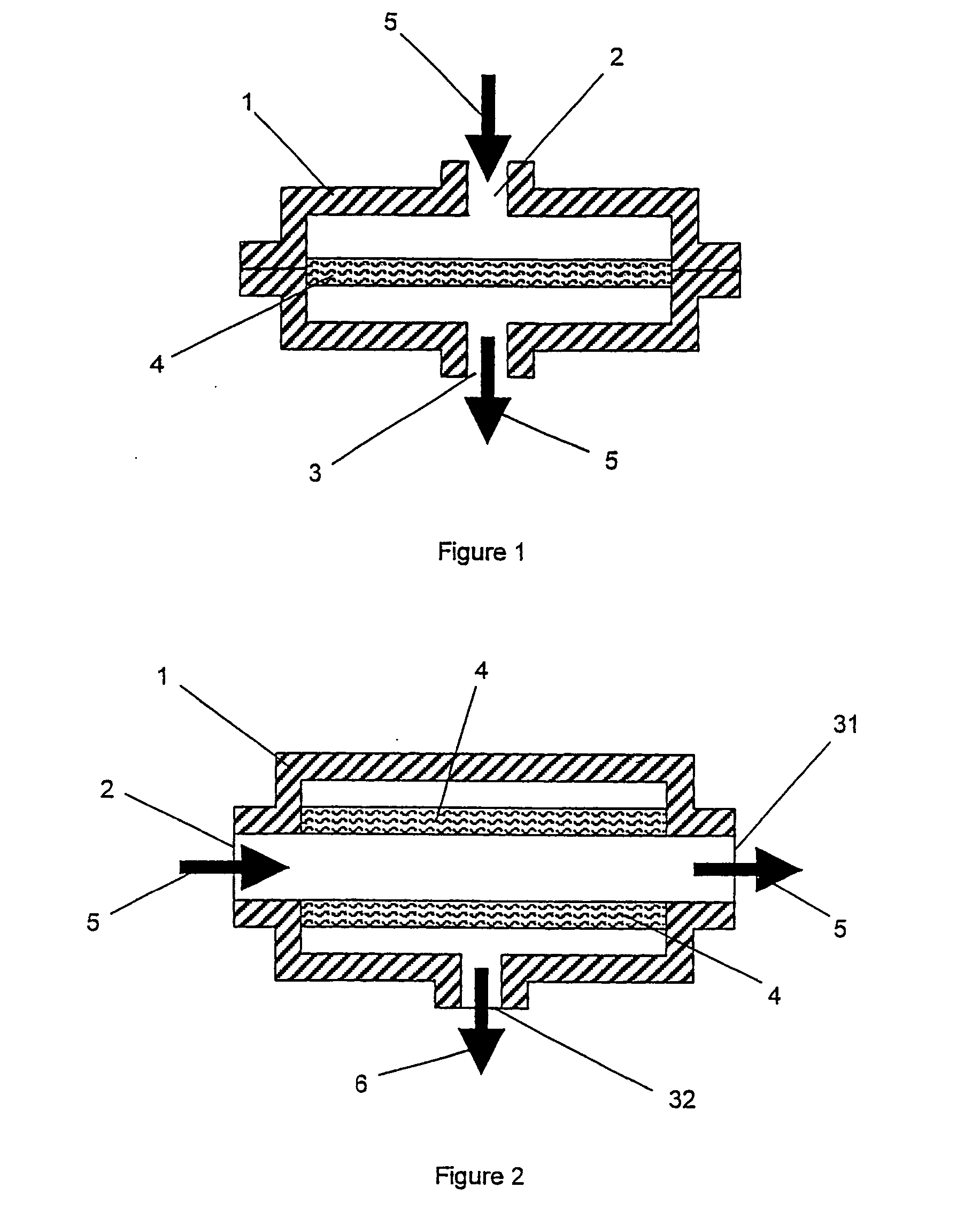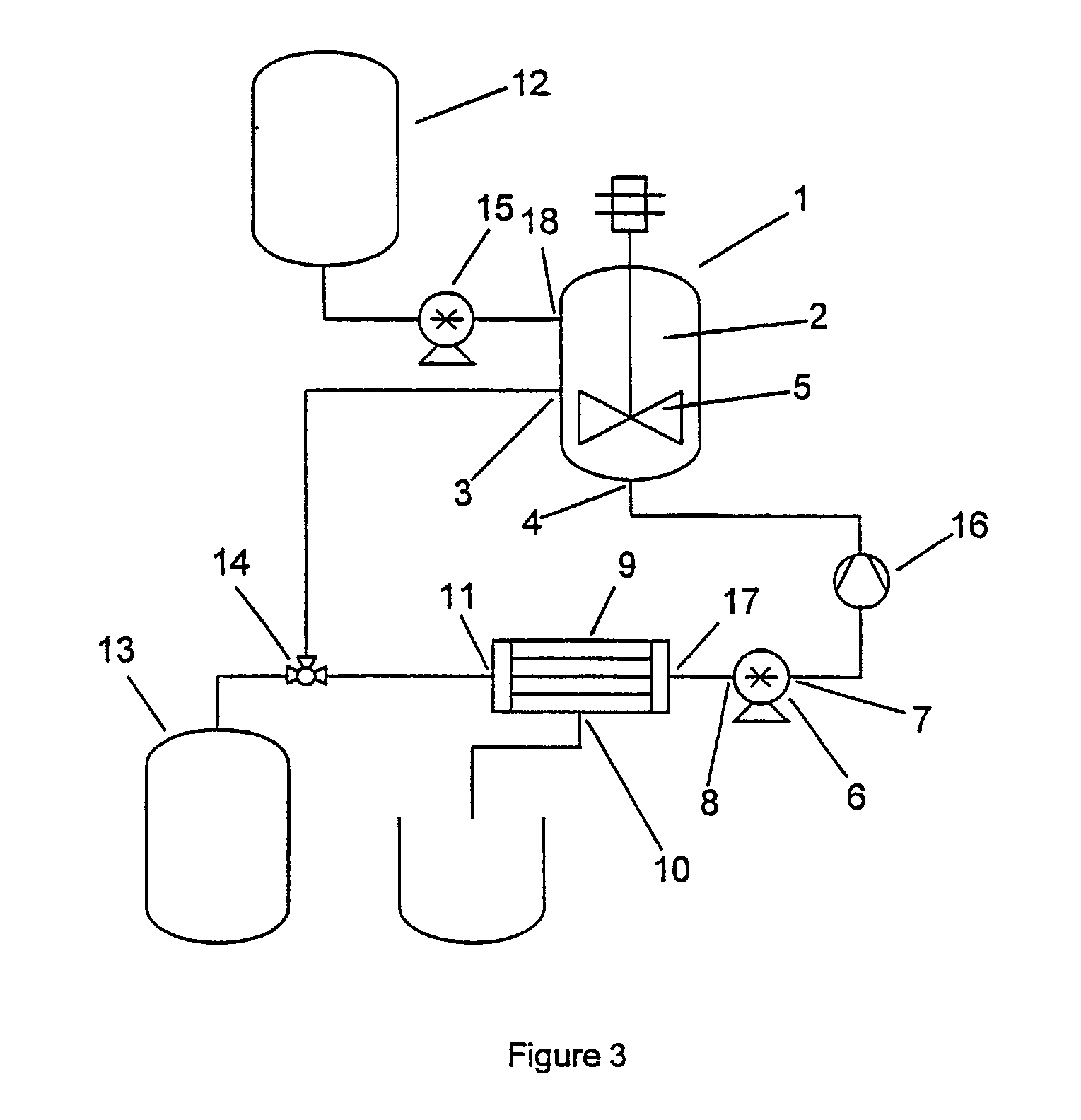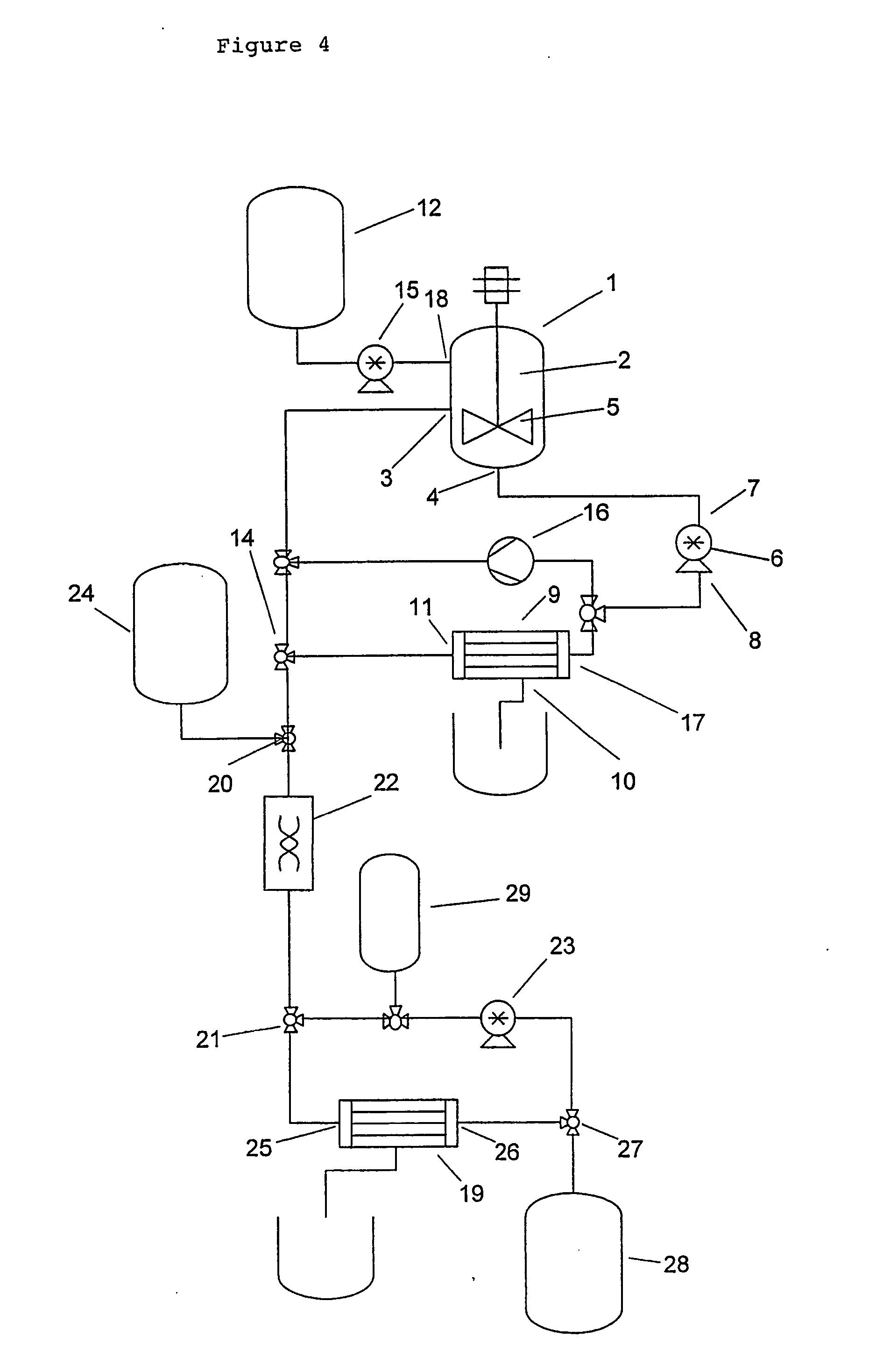Method for the preparation of purified microparticles
a technology of purified microparticles and microparticles, which is applied in the field of microparticle preparation, can solve the problems of unsatisfactory solution of purification aspect, inability to easily disperse aggregates, and large undesired unbound or unincorporated active compounds, and achieves significant degree of continuous processing
- Summary
- Abstract
- Description
- Claims
- Application Information
AI Technical Summary
Benefits of technology
Problems solved by technology
Method used
Image
Examples
Embodiment Construction
[0027] The method of the invention comprises a step of providing a liquid containing a dispersed precursor material which is capable of forming microparticles. The precursor material represents the material from which the microparticles will subsequently be formed by one or more physical or chemical processes. More typically, the precursor material comprises one or more components that are solid or semi-solid in their pure state, such as polymers or lipoidal substances. In some other cases, the components may be liquid and are only later, i.e. during the formation of the microspheres, turned into solids, e.g. by crosslinking.
[0028] Depending on the desired type of microparticles, precursor materials from various different chemical categories can be used. Preferred precursor materials comprise one or more pharmaceutically acceptable polymers. Polymers which are capable of forming microspheres include polyanhydrides, polyesters, polylactide, polyglycolide, poly(lactide-co-glycolide),...
PUM
| Property | Measurement | Unit |
|---|---|---|
| weight average diameter | aaaaa | aaaaa |
| volume | aaaaa | aaaaa |
| weight average diameter | aaaaa | aaaaa |
Abstract
Description
Claims
Application Information
 Login to View More
Login to View More - R&D
- Intellectual Property
- Life Sciences
- Materials
- Tech Scout
- Unparalleled Data Quality
- Higher Quality Content
- 60% Fewer Hallucinations
Browse by: Latest US Patents, China's latest patents, Technical Efficacy Thesaurus, Application Domain, Technology Topic, Popular Technical Reports.
© 2025 PatSnap. All rights reserved.Legal|Privacy policy|Modern Slavery Act Transparency Statement|Sitemap|About US| Contact US: help@patsnap.com



